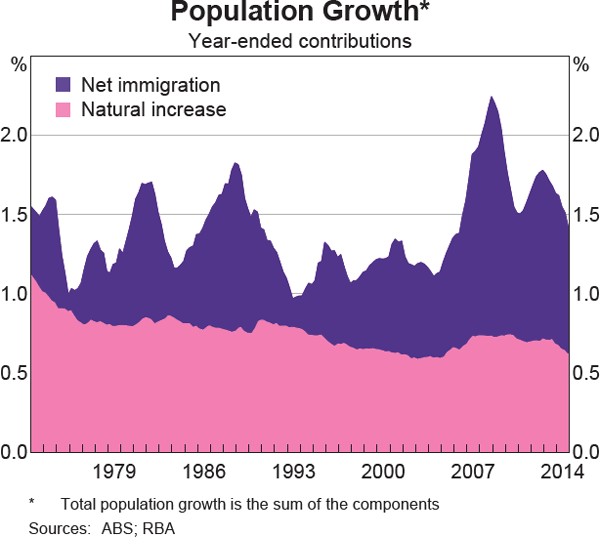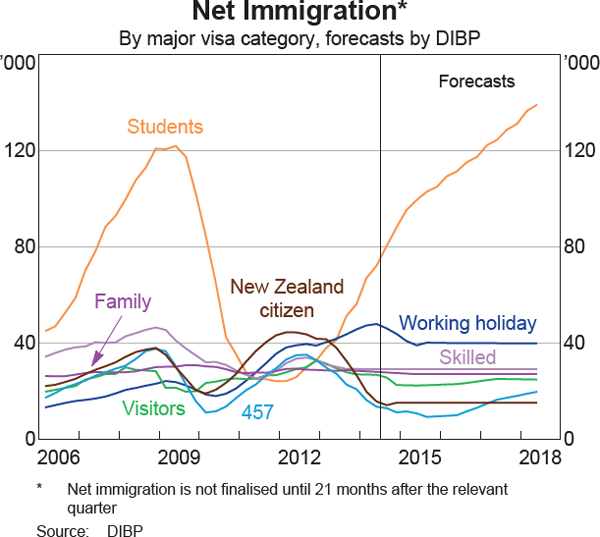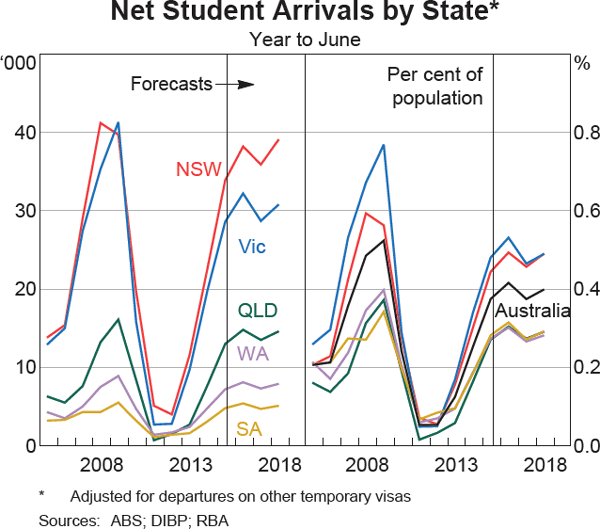Submission to the Inquiry into Home Ownership Drivers of Demand
House of Representatives Standing Committee on Economics
- Download 4.73MB
The main drivers of demand for owner-occupied housing replicate in most respects the drivers of the home ownership rate described in the previous section. In particular, the transition to a low-inflation regime, implying lower nominal interest rates, has significantly increased households' borrowing capacities relative to their current incomes, and therefore their capacity to service debt on owner-occupied housing. As also noted above, the effect of increased availability of finance would have been only partially offset by the corresponding increase in the down payment that must be accumulated, because maximum LVRs permitted on mortgages have increased relative to the situation a few decades ago.
In addition, as real incomes rise, households have more discretionary income left over after basic expenses are covered. Some of this additional discretionary income can be used to consume more housing, though this seems to have taken the form of larger and better-appointed dwellings rather than more households owning a dwelling (Jääskelä and Windsor 2011).[2] In any case, survey evidence suggests that total housing costs of owner-occupiers have not moved much relative to incomes over the past couple of decades.
Alongside the other demand drivers, one fundamental determinant of housing demand will be the rate of new household formation, which is in turn dependent on the interaction between population growth and developments in average household size. After relatively stable growth from the early 1990s through to the mid 2000s, Australia's population growth stepped up significantly owing to higher net immigration and, to a lesser extent, a slightly higher rate of natural increase (Graph 18).

Average household size, the other component of household formation, has declined markedly since the 1960s and, all else equal, has generated an increase in demand for housing for a given level of population. Much of this downward trend has been attributed to demographic changes resulting from falling fertility rates (Graph 6 above), an ageing population and rising household incomes. Since the early 2000s, however, average household size has been little changed. To the extent that this levelling off has in part been a response to rising housing prices, average household size may rise further to offset some of the increase in demand from population growth.
The composition of population growth can also influence housing demand. Much of the fluctuation in population growth rates over the past decade has been driven by fluctuations in net arrivals of people on student visas (Graph 19).[3] Recent rule changes have made it easier for students to remain in Australia after graduation, including by becoming permanent residents.

While any net immigration will boost demand for housing, the nature of that demand will depend on the life stage and circumstances of the newly arrived residents. The high fraction of students and former students in the flow of new migrants to Australia implies that the households they form will be younger than average, have lower incomes (at least initially) and be less able to purchase property (without familial assistance) than the average household already resident in Australia. This might result in lower home ownership rates than if migration had been lower or less concentrated in student visa entry. Student migrants will also be more likely to demand housing that is close to universities, city centres and other amenities rather than detached houses on the fringe of cities. It is also noteworthy that New South Wales and Victoria receive a disproportionate share of net student arrivals – more than two-thirds of the total – with projected contributions to total annual population growth of around half a percentage point, compared with 0.3 percentage points or less in other states (Graph 20).

Over the shorter term, fluctuations in interest rates can be expected to affect the demand for housing. By reducing the burden of debt repayments relative to income, lower interest rates may ease cash-flow constraints and increase borrowing capacity at the margin. This effect applies both to owner-occupiers and investors. Lower interest rates also encourage households to save less and borrow more in the present, thereby shifting consumption from the future (Kent 2015). However, prudent buffers on the minimum interest rates that lending institutions use to calculate allowable mortgage loan sizes imply that this effect might be smaller when interest rates are already low. The Australian Prudential Regulation Authority (APRA) has recently provided guidance to lenders that the interest rate used in these serviceability tests should be at least 7 per cent (APRA 2014). The Bank estimates that the lower limits on interest rates used in these calculations are probably binding at present, or close to binding. Thus, households that already planned to borrow as much as lenders would permit would not see an increase in borrowing capacity from a decline in interest rates at present.
Footnotes
Alternatively, households might use the additional income to compete for the best locations, thereby driving up the relative price of properties in those areas. [2]
These figures could overstate net immigration of students, because migrants who originally arrived on a student visa can leave Australia on another type of visa. Adjusting approximately for this does not change the overall trend or relative size of fluctuations in net immigration by visa type. [3]